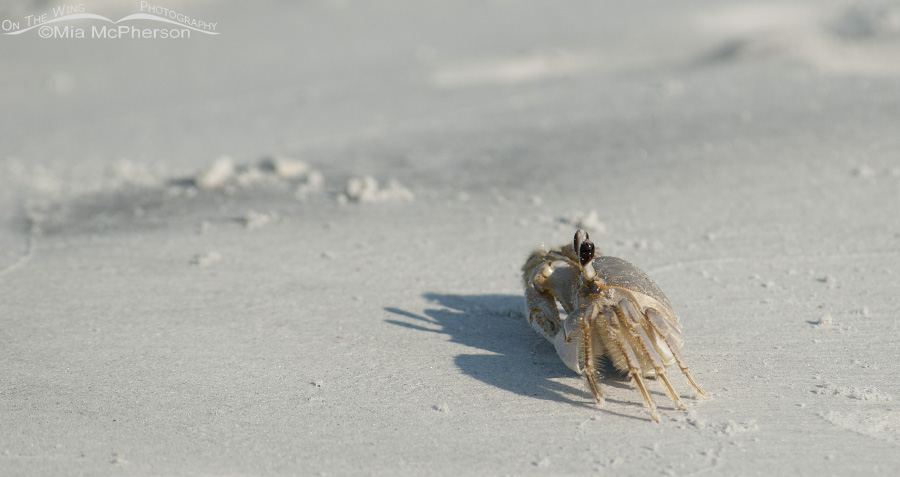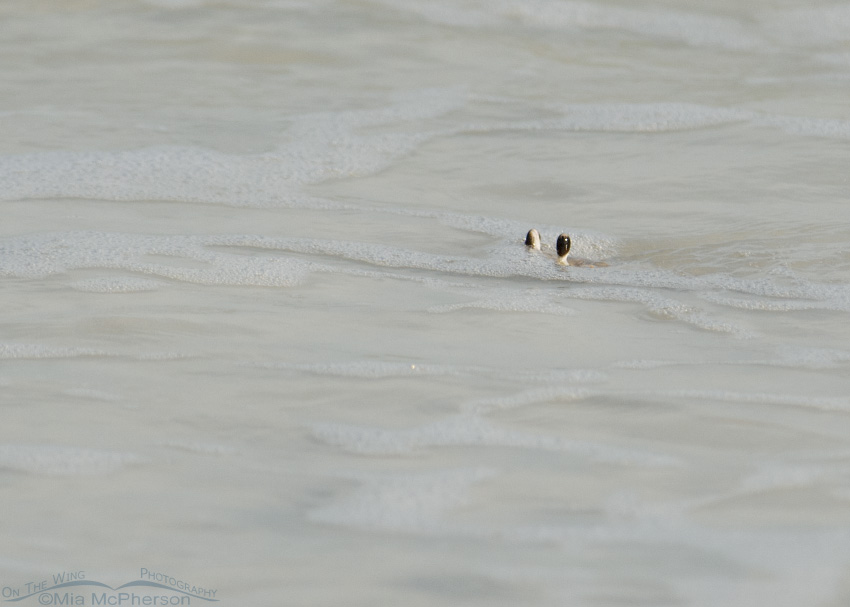 Ghost Crab on a sandy beach – Nikon D200, handheld, f6.3, 1/1250, ISO 250, Nikkor 80-400mm VR at 400mm, natural light
Ghost Crab on a sandy beach – Nikon D200, handheld, f6.3, 1/1250, ISO 250, Nikkor 80-400mm VR at 400mm, natural light
I wanted to share a few images of Ghost Crabs I took at Fort De Soto County Park in May of 2009. I was walking the beach looking for birds to photograph when I saw this Ghost Crab on the sand and I couldn’t resist taking images of it. The name “ghost crab” derives from their pale coloration and because they are generally nocturnal.
Ghost Crabs are common in tropical and sub-tropical regions throughout the world in intertidal areas. They dig deep burrows that some times have a second entrance. These crabs are prey for some of the wading birds at Fort De Soto County Park and Honeymoon Island State Park in Florida and I have also seen gulls prey on them.
 Ghost Crab at the water’s edge – Nikon D200, handheld, f6.3, 1/1250, ISO 250, Nikkor 80-400mm VR at 400mm, natural light
Ghost Crab at the water’s edge – Nikon D200, handheld, f6.3, 1/1250, ISO 250, Nikkor 80-400mm VR at 400mm, natural light
Ghost Crabs will search the beaches for carrion like fish that have washed up on the shore but they too are predators and will prey on small animals, sea turtle eggs and hatchlings and other crabs.
I am not sure why this particular Ghost Crab was out of its burrow during the day but I was happy that I had the opportunity to photograph it.
 Ghost Crab eyestalks above the water – Nikon D200, handheld, f6.3, 1/1000, ISO 250, Nikkor 80-400mm VR at 400mm, natural light
Ghost Crab eyestalks above the water – Nikon D200, handheld, f6.3, 1/1000, ISO 250, Nikkor 80-400mm VR at 400mm, natural light
The crab left the water’s edge and moved into the shallow water and I laughed out loud while I photographed it because it looked rather funny to me to only see it’s eyestalks above the surface. The crab may have been wetting its gills with seawater because they breathe oxygen through their moistened gills.
I left the crab in the water after this frame and went down the beach looking for birds.
Life is good.
Mia
Click here to see more of my Ghost Crab photos.


Always fun to see crabs on the beach (this one’s new to me)—love the last image.
Add me to the list of those laughing.
Thanks.
My reaction was the same…I laughed out loud when I saw this image!!! I LOVE it!!!
“Up periscope” comes to mind when I saw the last photo. Too funny. Wonderful photos.
Mia, we see Ghost Crabs during the day very frequently when we are on the beaches of the Outer Banks of NC. What seems to be the biggest determining factor about whether they are out or not is the presence or absence of people. They are one of the things that makes walking the beach so much fun.
Beautiful images Mia.